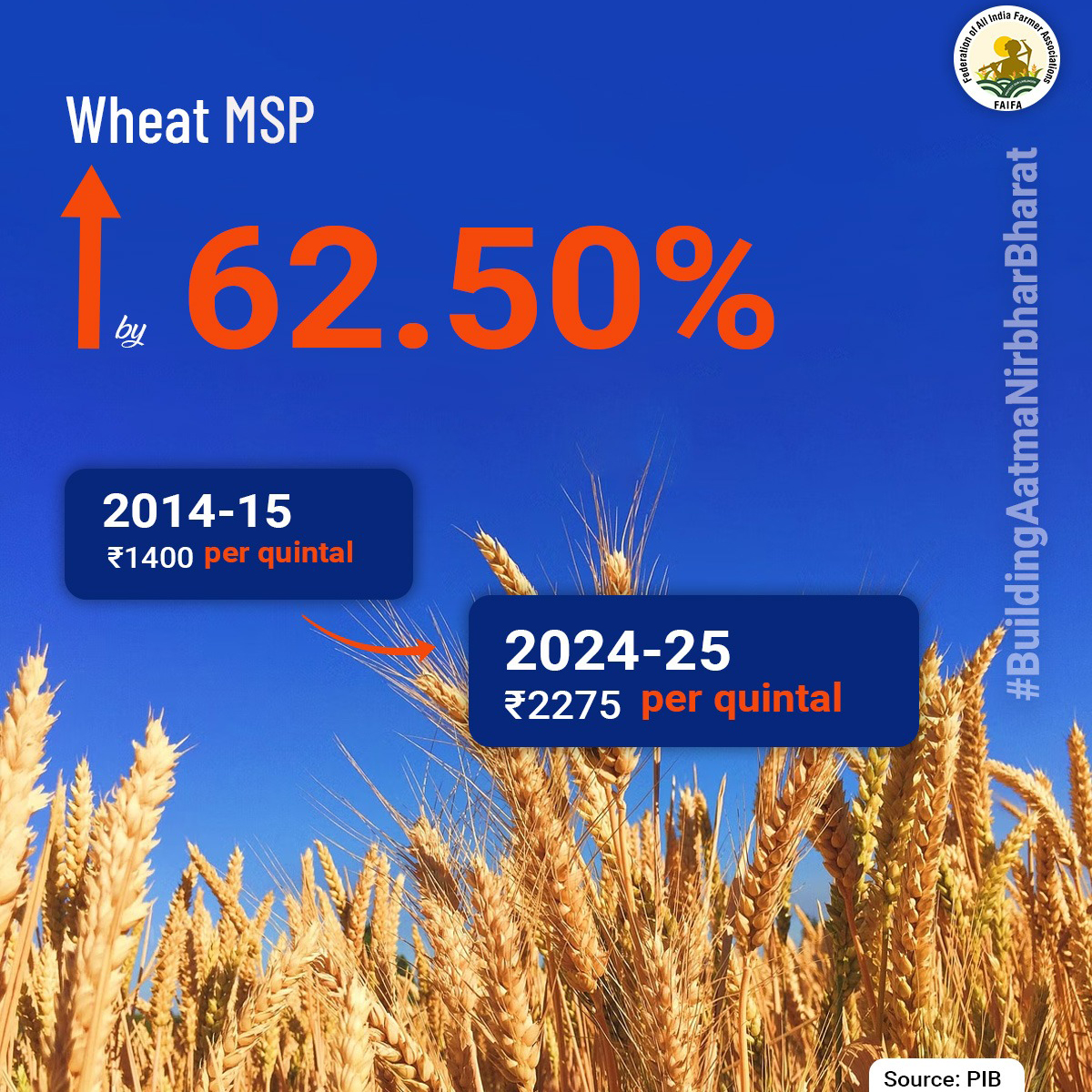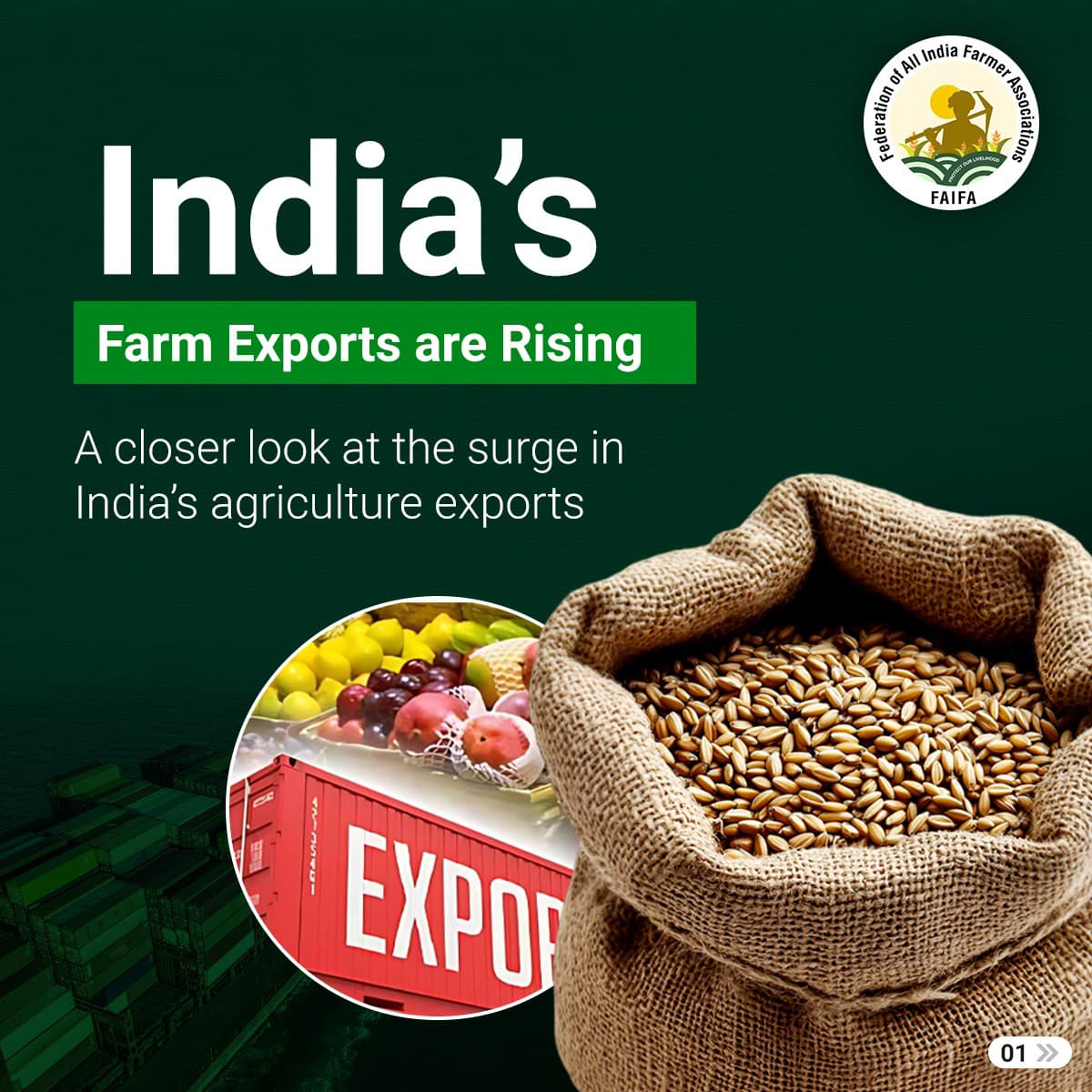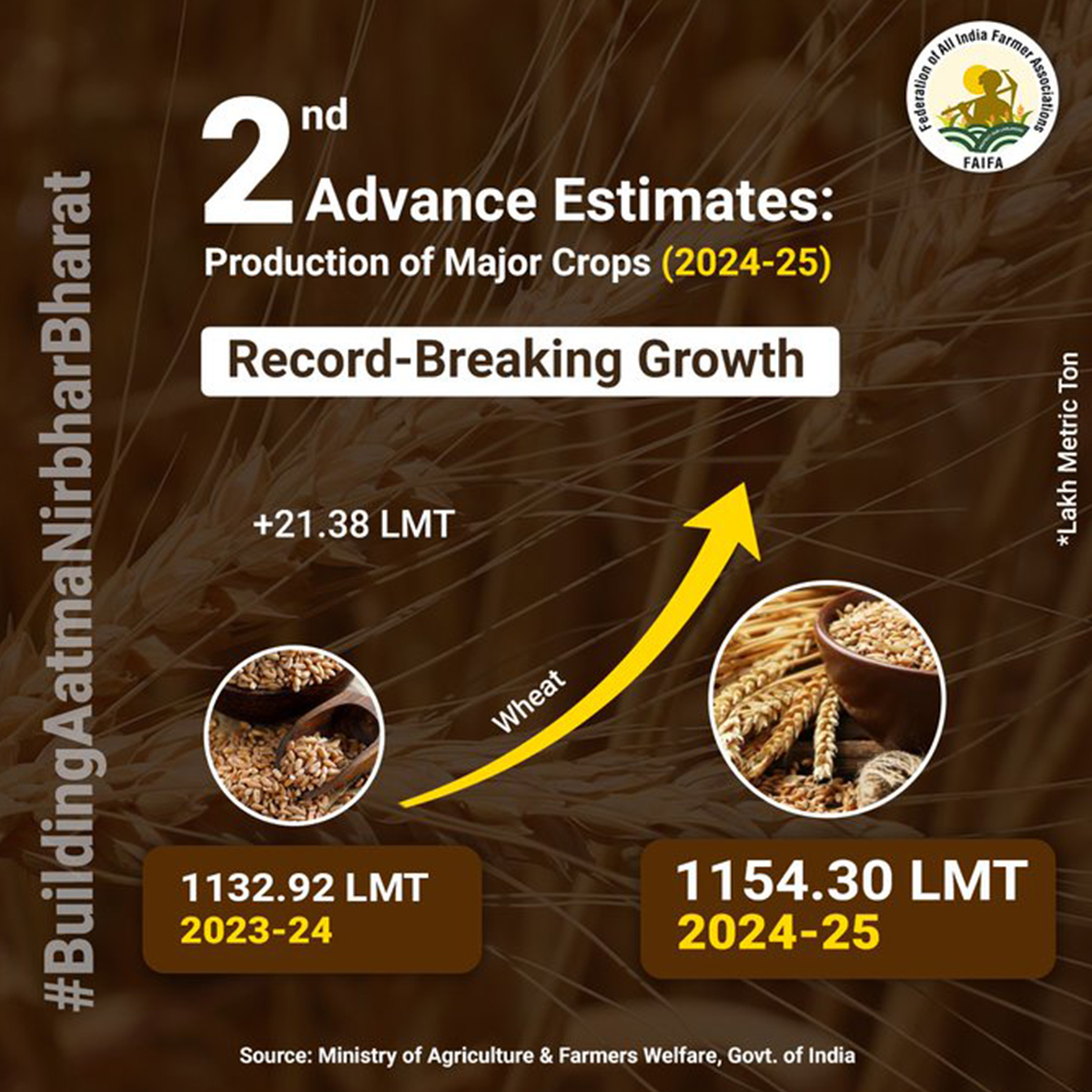Wheat
India is the world’s second-largest wheat producer after China, with an area of about 32 million hectares under wheat cultivation and an annual production of more than 110 million kgs.
The country primarily grows soft to medium-hard, medium-protein white bread wheat, similar to the United States hard white wheat. Wheat from central and western India is typically harder, with higher protein and gluten content.
India also produces 1.0–1.2 million tonnes of durum wheat, mainly in Madhya Pradesh, though it is rarely marketed separately due to segregation issues. Some of it is sold at a premium price for high-value products.

Climatic Requirement
Wheat is a very adaptable crop. It can grow in tropical, sub-tropical, temperate, and even very cold regions, up to 60° north and 3300 meters above sea level. It survives cold and snow, growing again when spring arrives. Wheat grows best in cool, moist weather during its growing period, followed by dry, warm weather to ripen the grain. The ideal temperature for seed germination is 20–25°C, though it can still sprout between 3.5°C and 35°C. Rain right after sowing can harm germination and cause disease. Warm, damp areas are not good for wheat farming.
Soil
Wheat is grown in a variety of soils of India. Soils with a clay loam or loam texture, good structure and moderate water holding capacity are ideal for wheat cultivation.
Wheat grows best in neutral soils. Under dry conditions, well-drained heavy soils are ideal as they absorb and retain rainwater. However, poorly drained heavy soils are unsuitable due to wheat’s sensitivity to waterlogging. Lighter soils can also support wheat if their water and nutrient retention is improved.
Sowing Time & Methods
The optimal sowing time for wheat varies by region but generally falls between late October and early December. Wheat is usually sown after the harvest of Kharif crops like rice. The most common method of sowing is the drill method, which ensures uniform seed placement and depth. In some areas, broadcasting is still practiced.Zero tillage is also gaining popularity, particularly in conservation agriculture, as it saves time, reduces costs, and helps retain soil moisture.
Growing States
Uttar Pradesh, Madhya Pradesh, Punjab, Haryana, Rajasthan, Bihar and Gujarat are the major wheat-producing States in India, together contributing a significant share of the country’s total wheat output.
Varieties
India grows several varieties of wheat, mainly divided into two types: bread wheat (Triticum Aestivum) and durum wheat (Triticum Durum). Bread wheat is the most widely grown and used for making chapatis and bakery products. Durum wheat, mostly grown in Madhya Pradesh, is harder and used for pasta and high-quality semolina products.
Water Management
Wheat crop in India generally requires 4 to 6 irrigations, with a total water need of 450– 650 mm. The most critical stages for moisture are crown root initiation and flowering, where water stress can significantly affect yield. Effective irrigation scheduling should be based on soil type, climatic conditions, and the specific wheat variety grown.
Weed Control
Weed control is crucial for successful wheat cultivation, as weeds compete for essential resources, reducing yield. Common weeds in Indian wheat fields include Phalaris minor (little seed canary grass) and Avena fatua (wild oats). Farmers often employ a combination of methods, including timely sowing to give wheat a competitive advantage, manual weeding where feasible, and the application of selective herbicides like isoproturon or clodinafop to target specific weed species. Early control, especially within the first 30–40 days after sowing, is essential to minimize competition for nutrients, water, and sunlight.
Glimpses of our Social Media Posts










<h5 class=”mb-0″ style=”text-align: center; padding: 0.05px; color: #ffffff </h5>
Wheat – All India Area and Production
|
|
2018-19 |
2019-20 | 2020-21 | 2021-22 | 2022-23 | 2023-24 |
| Area (Million Hectares) |
29.3 | 31.4 | 31.1 | 30.5 | 31.4 | 31.8 |
| Production (Million Tonnes) |
103.6 | 107.9 | 109.6 | 107.7 | 110.6 | 113.3 |
Source:Directorate of Economics & Statistics, Department of Agriculture and Farmers Welfare.
Wheat Exports from India
|
|
2019-20 |
2020-21 | 2021-22 |
2022-23 |
2023-24 |
|
Value |
443.16 | 4,162.13 | 15,768.85 | 11,685.24 | 469.41 |
Source:Department of Commerce, Ministry of Commerce and Industry, Govt. of India
https://tradestat.commerce.gov.in
Global wheat trade exceeds all other crops combined, with rising international demand for Indian wheat. India’s wheat exports in recent years have reached more than Rs.10,000 crores annually with Nepal, Iraq, Korea Republic, UAE, and Mongolia being the key destinations.
References:
- Farmers’ Portal (https://farmer.gov.in)
- Agricultural and Processed Food Products Export Development Authority (http://apeda.gov.in)
